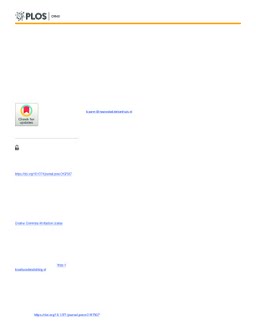2018-05-01
Health related quality of life in adults after burn injuries: A systematic review
Publication
Publication
PLoS ONE , Volume 13 - Issue 5
Objectives Measurement of health-related quality of life (HRQL) is essential to qualify the subjective burden of burns in survivors. We performed a systematic review of HRQL studies in adult burn patients to evaluate study design, instruments used, methodological quality, and recovery patterns. Methods A systematic review was performed. Relevant databases were searched from the earliest record until October 2016. Studies examining HRQL in adults after burn injuries were included. Risk of bias was scored using the Quality in Prognostic Studies tool. Results Twenty different HRQL instruments were used among the 94 included studies. The Burn Specific Health Scale–Brief (BSHS-B) (46%), the Short Form–36 (SF-36) (42%) and the EuroQol questionnaire (EQ-5D) (9%) were most often applied. Most domains, both mentally and physically orientated, were affected shortly after burns but improved over time. The lowest scores were reported for the domains ‘work’ and ‘heat sensitivity’ (BSHS-B), ‘bodily pain’, ‘physical role limitations’ (SF-36), and ‘pain/discomfort’ (EQ-5D) in the short-term and for ‘work’ and ‘heat sensitivity’, ‘emotional functioning’ (SF-36), ‘physical functioning’ and ‘pain/discomfort’ in the long-term. Risk of bias was generally low in outcome measurement and high in study attrition. Conclusion Consensus on preferred validated methodologies of HRQL measurement in burn patients would facilitate comparability across studies, resulting in improved insights in recovery patterns and better estimates of HRQL after burns. We recommend to develop a guideline on the measurement of HRQL in burns. Five domains representing a variety of topics had low scores in the long-term and require special attention in the aftermath of burns.
| Additional Metadata | |
|---|---|
| doi.org/10.1371/journal.pone.0197507, hdl.handle.net/1765/107150 | |
| PLoS ONE | |
| Organisation | Department of Public Health |
|
Spronk, I. (Inge), Legemate, C., Oen, I., van Loey, N. (Nancy), Polinder, S., & van Baar, M. (2018). Health related quality of life in adults after burn injuries: A systematic review. PLoS ONE (Vol. 13). doi:10.1371/journal.pone.0197507 |
|

